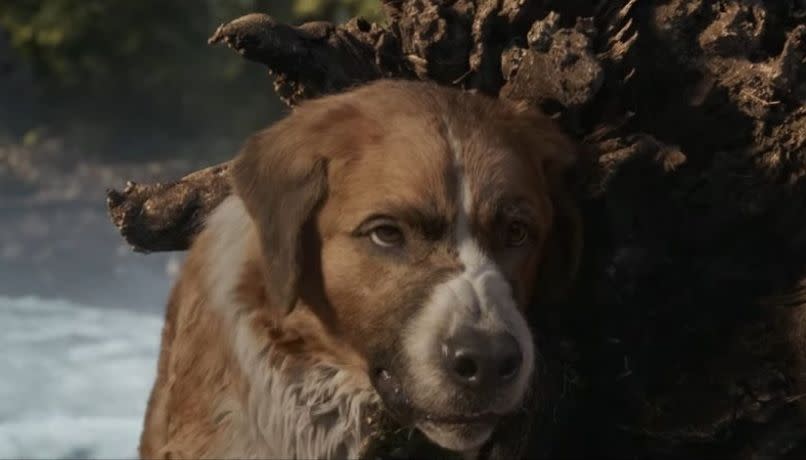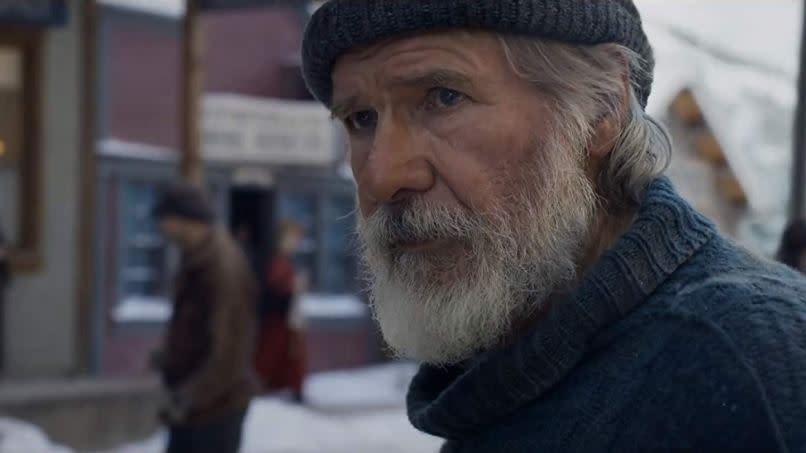Film Review: Harrison Ford’s The Call of the Wild Leaves Just Enough Meat on the CGI Bone
The post Film Review: Harrison Ford’s The Call of the Wild Leaves Just Enough Meat on the CGI Bone appeared first on Consequence of Sound.
The Pitch: In 1903, Jack London wrote and published a short adventure novel entitled The Call of the Wild. In it, a large St. Bernard–Scotch Collie mix named Buck is kidnapped from his master Judge Miller (Bradley Whitford) and home in California, and sold off to become a sled dog in the Yukon. Over the course of his travels, he encounters a bevy of gentle and cruel masters, some who rule through a smile, others who reign by “the law of the club.” Eventually, the canine comes to connect with his inner animal, to hear “the call of the wild,” and forms a friendship with a secluded mournful father John Thornton (Harrison Ford).
The Whip and the Club: Previous cinematic adaptions of London’s classical tale—the 1935 version starring Clark Gable and Loretta Young and the 1972 iteration featuring Charlton Heston (and the 1997 version narrated by Richard Dreyfuss that we’ll not talk about)—have all utilized real dogs. However, following the craze of photorealistic animation, most notably used in The Lion King, director Chris Sanders’ retelling employs the same tactics to create Buck, and for the most part succeeds.
While Buck in the early scenes, in Judge Miller’s home, often appears copy-and-pasted into the frame, the canine does emote well. He expresses pain, wonder, excitement, and bewilderment easily. For instance, when Buck is kidnapped and later cowed into obeying his captors, the look in his eyes whenever a vengeful human uses a club emits despair.
The technology also allows for physical gags not possible for a real dog, like when Buck first encounters snow and daintily tiptoes through it, which is campy enough to love. Overall, Buck has greater personality and pathos in this form. It’s a rare win for photorealistic animation, even if the rest of the CGI doesn’t hold up nearly as well.

Call of the Wild (20th Century Studios)
Pug-get About It: Buck isn’t the only questionable CGI in The Call of the Wild. The environment, supposedly set in the northern reaches of Alaska, clearly wasn’t filmed on the northern reaches of Alaska. During this portion, Buck becomes a sled dog for a fledgling team of mail carriers played by Omar Sy and Cara Gee, who often struggle to deliver valuable correspondences and packages on time to the secluded residents of this outfront tundra.
Buck, a dog out of water from California, and in the face of the domineering leader of the sled dog pack Spitz, gains confidence and connects with his primal instincts as he befriends the other canines. Like Buck, many of the pups on the team are also CGI’d to varying degrees of success. What’s more, montage sequences, where the mail carriers are pulled through the snowy terrain by the dogs, are more akin in aesthetics to wonky arcade games in a movie theater than actually sledding through the frozen Alaskan landscape. Hell, even Thorton’s plain cabin is CGI’d: Ford is clearly standing on a soundstage surrounded by a green screen and selling the experience the best a quarter pinball machine can when the lights aren’t working.
And yet, past the ruff edges, The Call of the Wild still keeps its footing. Never a kids movie, more of a family night out, the film often relates closest to the campy Disney Westerns of the 50’s and 70’s, from Old Yeller to The Apple Dumpling Gang in its earnestness and wholesomeness. Because Sanders does ultimately win by making Buck the most innocent selfless canine in the face of the evilness and violence of humans. Like Thorton, we come to root for Buck to connect with the primitive wolf within him, to abscond from the world of man deeper into the wilderness with his own kind.

Call of the Wild (20th Century Studios)
The Empire Barks Back: Nevertheless, The Call of the Wild does slow to a standstill when Thorton’s narrative intertwines with Buck’s. While Ford offers earnest and heartfelt acting as a father drowning his grief in the bottle, his storyline is nearly uneventful and meandering. The only drama involves a wealthy band of marauding elites, such as the campy Hal (Dan Stevens) and Mercedes (Karen Gillan, who is highly underutilized). Hal becomes struck by gold fever, delusional and paranoid of Thorton, suspecting that he wants a mystical golden river for himself.
However, The Call of the Wild’s terribly paced second half most likely stems from this iteration’s understandable unfaithfulness to the novel. In London’s tale, Thorton and Buck come into contact with Native Americans on their way to exploring the Yukon. In fact, Buck kills several of them and even haunts them later on. With the book, weighed down by the racism of the period, Sanders washes away its nauseating aspects for a shinier less gruesome veneer. Moreover, Sanders morphs Thorton from a prospector in debt into a grieving morally pure father. The only hint of violence, when not perpetrated against Duke, occurs when Duke literally throws a person into a burning cabin, which might solely make The Call of the Wild worth the price of admission.
Editors' Picks
1890470 Film Review: Harrison Fords The Call of the Wild Leaves Just Enough Meat on the CGI Bone Harrison Ford is once again the highest grossing actor of all timewhite god screen shot1 e1427904109702 Film Review: Harrison Fords The Call of the Wild Leaves Just Enough Meat on the CGI Bone
The Verdict: Sanders’ adaption of the classic London novel didn’t need a CGI dog and is a formulaic adventure tale, and certainly would’ve been prettier if the VFX budget were dedicated to filming on location. Even so, barring The Secret Life of Pets 2, Ford has often relegated himself to serious figures or characters lampooning those archetypes—Branch Rickey in 42 or Mack Tannen in Anchorman 2: The Legend Continues. In that sense, it’s refreshing to see him in a lighthearted performance, one relying on the natural charm and delight present in his best roles (see: John Book in Witness and, of course, Indiana Jones). Also, Buck is endearing and easy to like.
While The Call of the Wild is silly, and never completely pulls the wool over the eyes with respect to the CGI, there’s enough meat on the bone to gnaw on before burying it in the backyard.
Where’s It Playing? Head into the wild on February 21st.
Trailer:
Film Review: Harrison Ford’s The Call of the Wild Leaves Just Enough Meat on the CGI Bone
Michael Roffman
Popular Posts



